
As we explore the rigorous process behind becoming an astronaut, it’s clear that only a select few make it through the extraordinary demands of astronaut training and selection. The journey to donning a spacesuit and venturing into space is incredibly competitive and complex, involving extensive preparation that covers both physical and mental challenges.
With recent developments in space travel, including the advent of space tourism as highlighted by pioneering sites such as SpaceVoyageVentures.com, the role of astronauts is evolving, encompassing not only scientific exploration but also the potential for commercial spaceflight responsibilities.
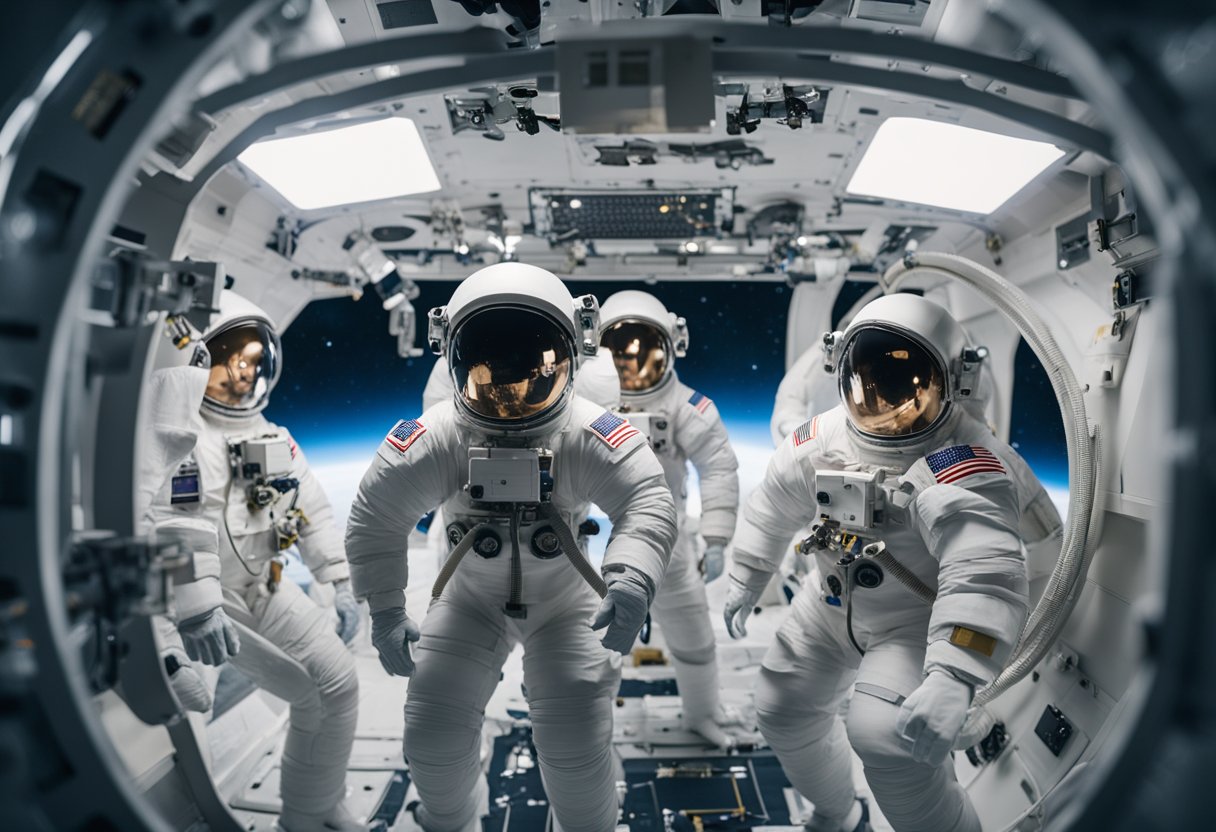
Astronaut candidates undergo a meticulous selection process that sifts through thousands of applicants, as seen in the Astronaut Selection Program, where over 12,000 individuals applied in a recent round. Selected candidates must possess exceptional academic backgrounds, meet stringent physical and medical standards, and demonstrate psychological robustness and teamwork capabilities.
The training programme itself is an intensive regime that equips candidates with the necessary skills required for space missions. This includes mastering technological tools, coping with various simulated environments, and preparing for the unique challenges of living and working in microgravity.
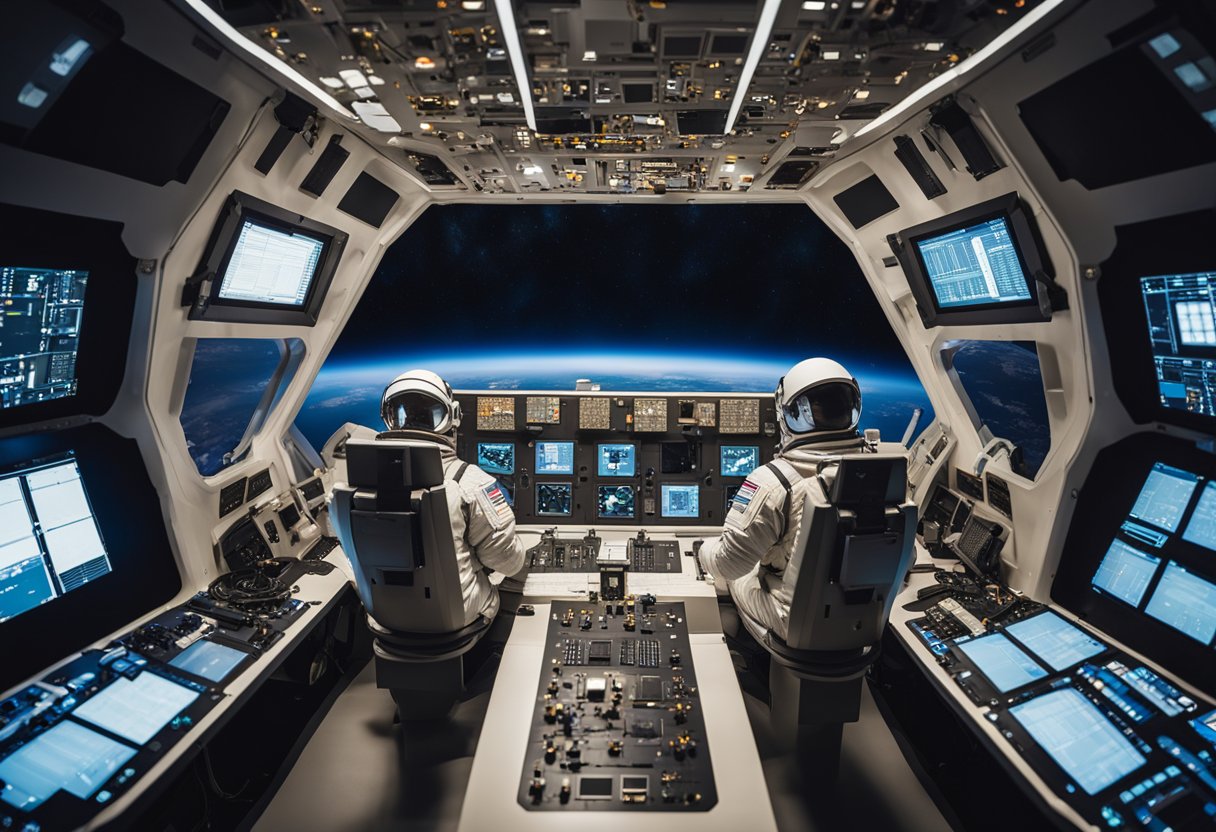
We work in an environment that requires a diverse set of roles and responsibilities. From taking part in spacewalks to conducting scientific experiments, our duties are integral to the success of space missions.
Spacewalks, or extravehicular activities (EVA), are critical components of our work. We must perform complex tasks outside the spacecraft, such as repairing equipment or conducting experiments. Training for these activities is intense, often conducted in large swimming pools to simulate microgravity. The safety protocols are rigorous and we must be adept at using tools and manoeuvring in a weightless environment.
Our preparation for spaceflight operations is comprehensive. We spend countless hours in simulators for the spacecraft we will operate, learning every detail from systems management to emergency procedures. Every mission requires us to be proficient at piloting, navigation, and communications, ensuring that we work seamlessly with ground control and our fellow astronauts.
Conducting scientific experiments is among our core duties. Using specialised laboratory equipment aboard the International Space Station, we carry out studies in fields like biology, physics, and Earth science. Microgravity provides a unique environment for research, allowing us to gain insights not possible on Earth. Every experiment we perform adds valuable knowledge to science and may benefit space exploration or improve life on our planet.
The astronaut selection process is rigorous and designed to identify candidates with a strong educational background and the necessary skills to succeed in the demanding environment of space.
Our astronaut candidates typically come from diverse backgrounds, but they all share a solid foundation in STEM fields. In terms of education, we expect that astronaut hopefuls have obtained at least a master’s degree from an accredited institution. This master’s degree can span a range of disciplines such as engineering, biological science, physical science, computer science, or mathematics.
Experience is equally vital. Many astronaut candidates come from professional backgrounds that include substantial experience in STEM fields or from careers in the military. Such experience not only showcases their technical prowess but also their leadership skills and ability to perform under pressure.
The qualifications and skills required for selection into the astronaut program are multifaceted. All applicants need to be U.S. citizens, and should have demonstrable experience in STEM fields. This ensures a deeper understanding of the astrological science and tasks they are likely to encounter while in space.
Success in the selection process hinges on a range of skills that include physical fitness, cognitive ability, and teamwork. We look for individuals who display a propensity for continuous learning and problem-solving, coupled with the ability to communicate effectively. Diversity among astronaut teams is also crucial as it brings a range of perspectives and solutions to complex problems.
To partake in the application process, candidates need to submit their application by the stipulated application deadline. Selection then includes a detailed review of their educational and professional background, as well as assessments to evaluate the necessary skills and qualifications.
We ensure our astronaut teams are equipped not just for current space missions but also for the adventurous possibilities with up-and-coming space tourism ventures such as those highlighted by SpaceVoyageVentures.com.
The Astronaut Training Programme is a meticulous process that equips aspiring spacefarers with the essential skills required for the rigours of space travel. From mastering scientific principles to enduring intense physical conditioning, this programme is structured to ensure that every candidate can perform under the unique demands of space missions.
In Basic Training, we ensure that candidates gain familiarity with the core subjects fundamental to all space missions. Candidates spend substantial time understanding astronomy, physics, and geology, the knowledge of which is crucial for any expedition beyond Earth. This includes time in classroom settings at the Johnson Space Center and practical sessions in state-of-the-art simulators.
Once the foundation is laid, Advanced Training focuses on honing specific skills necessary for space missions.
In the Specialisation Training segment, candidates specialise based on their assigned mission roles.
Throughout these stages, candidates are continuously assessed to ensure they meet the high standards required by NASA’s Astronaut Candidate Training Program. The goal is to fully prepare them for the challenges of space travel and represent humanity’s aspirations among the stars.

In selecting astronaut candidates, we specifically look at their solid foundation in STEM disciplines, ensuring they are well-equipped for the technical challenges of space missions.
We require our astronaut candidates to have completed an undergraduate education in a STEM (Science, Technology, Engineering, Mathematics) field. This foundation is critical as it equips them with the problem-solving skills and technical knowledge necessary for the rigours of spaceflight. Fields of study among candidates often include engineering, biological science, physical science, and computer science.
Moving beyond undergraduate studies, many of our candidates possess master’s degrees or higher in their respective STEM fields. Advanced degrees provide deeper expertise and often involve significant levels of research. Skills and experience gained through in-depth study and application in areas such as medicine or mathematics are invaluable when confronting the unique challenges present in the environment of space.
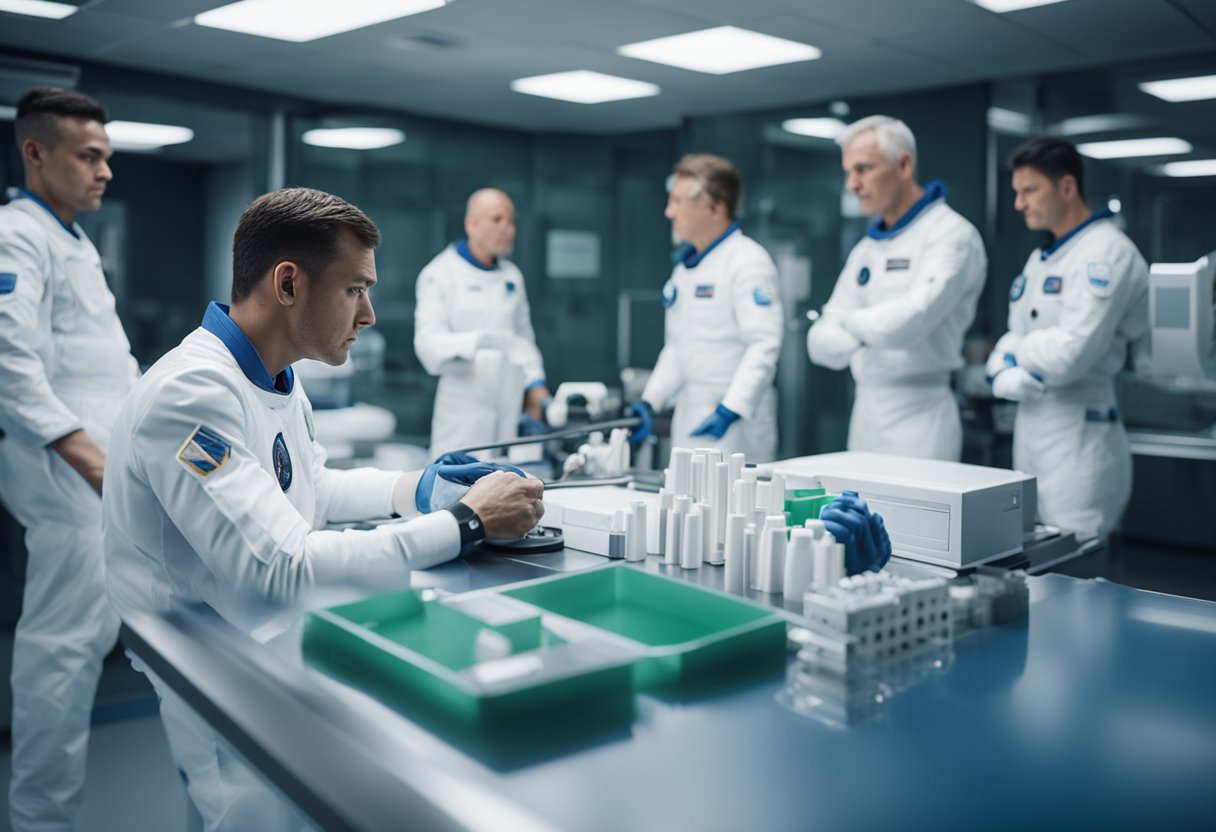
Before aspiring astronauts can embark on the rigorous journey of space exploration, we must ensure they meet stringent physical and medical standards. These criteria are vital to maintaining astronaut health and safety during missions.
Astronaut candidates must be in exceptional physical condition. Our protocols encompass a wide range of physical capabilities, including cardiovascular endurance, muscular strength, and flexibility. Each candidate’s overall health is assessed to ensure they can withstand the unique pressures of space travel, such as microgravity and space radiation. The astronaut physical fitness tests simulate various aspects of the space environment.
Ensuring the ongoing health of astronauts involves comprehensive medical tests and periodic evaluations. These evaluations include but are not limited to:
Medical requirements for selection and annual recertification are outlined in NASA’s Astronaut Medical Standards, Selection and Annual Recertification document. The standards detailed in this document are non-waiverable, stressing the importance of baseline health and physical condition for astronaut candidates. Such thorough medical evaluations and tests are designed to ensure the crew’s health, safety, and occupational longevity.
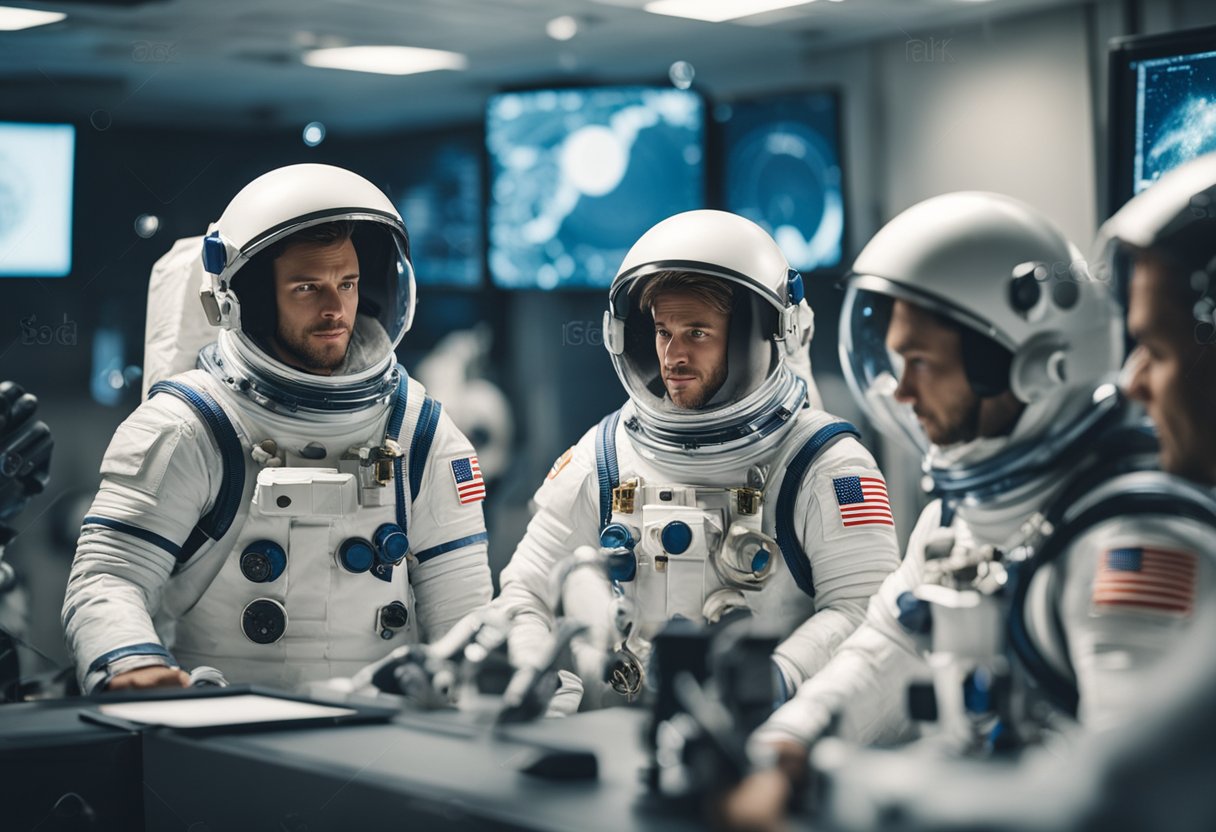
Astronaut training is a rigorous process that requires candidates to demonstrate superior psychological stability and teamwork competencies. These proficiencies are critical to the success of missions, where cooperation, mental resilience, and clear communication are vital.
Astronauts must navigate the stresses of isolation, confinement, and the dangers of space. We look for individuals who possess a robust psychological makeup to withstand these pressures. This includes an ability to cope with prolonged separation from loved ones and to manage any interpersonal conflicts that may arise during a mission. Psychological countermeasures are implemented, targeting selection and training phases to ensure astronauts can maintain their mental health before, during, and post-mission.
Clear, effective communication and cohesive teamwork skills are non-negotiable in the space environment. Astronauts work closely with each other and with mission control, making teamwork pivotal. Every member must be adept in cross-cultural communication, as international cooperation is often necessary.
Communication proficiencies extend to non-verbal cues, given the dependency on suits and equipment during extra-vehicular activities. Additionally, knowledge from astronauts’ experiences and research aboard space stations reinforces the value of teamwork in enhancing performance and well-being.
Astronaut training is no longer the reserve of just government agencies. As commercial spaceflight ventures, like SpaceVoyageVentures.com, begin to document and offer space tourism opportunities, the role of psychological resilience and team dynamics becomes increasingly relevant to a broader public.
Space exploration has increasingly become a collaborative effort among various nations and their respective space agencies. Together, we are achieving what would be nearly impossible alone.
NASA has long been at the forefront of international space exploration collaboration. By working with the International Space Station (ISS), which is the largest space structure ever built, NASA has joined forces with the space agencies of Russia, Canada, Japan, and the participating countries of the European Space Agency. This partnership ensures a constant presence of international astronauts in space, sharing research and technology.
Through these collaborative efforts, we as global partners benefit from shared resources, knowledge, and expertise. Canadian and Japanese technological contributions to the ISS have been pivotal, ranging from Canada’s iconic Canadarm2 to Japan’s Kibo laboratory module. The European Space Agency (ESA) operates the European Astronaut Centre, where astronauts from various nations receive comprehensive training for missions.
Astronaut programmes have evolved to include a remarkable feature – exchange programmes, which allow astronauts to train with different space agencies, enhancing their skills and understanding of international procedures and equipment. NASA’s Astronaut Selection Program reflects this, with NASA selecting a diverse group of individuals, ready to be part of international missions.
ESA astronaut selection follows a similar approach, with its rigorous process ensuring that European astronauts are equipped to work among various cultures and technologies aboard the ISS. This symbiotic exchange amplifies our collective capability to undertake complex space missions and expand our knowledge of space.
Through the lens of our collaborative spirit and shared goals, we continue to foster relationships and build pathways for the future—a future that may one day feature the likes of SpaceVoyageVentures.com, celebrating not just professional astronauts, but also the public as they look to the stars with aspirations of space travel.
As we explore the origins of human spaceflight, it’s crucial to acknowledge the pioneering programs like Mercury and Apollo, which set benchmarks for what followed, as well as the recent advancements that continue to shape our journey beyond Earth.
The Mercury programme marked the United States’ first foray into human spaceflight, with the explicit goals of sending astronauts into space and safely returning them to Earth. Launched in 1958, the programme’s legacy includes a total of 25 flights, with six manned missions that proved humans could indeed survive and function in space.
It was the foundation upon which later programmes, such as the iconic Apollo missions, were built, culminating in Neil Armstrong and Buzz Aldrin’s historic moon landing in 1969. The success of the Apollo missions established the feasibility of long-duration missions and set the stage for all subsequent human space exploration efforts.
In our contemporary era, space exploration continues to evolve at an impressive pace. The International Space Station, as a multinational collaborative effort, is emblematic of the ongoing commitment to long-duration missions that expand our understanding of living in space. The Artemis programme, with its sights set on returning humans to the moon and eventually reaching Mars, represents a new chapter in our celestial journey. Its centrepiece, the Orion spacecraft, is designed for deep space endeavours and will be instrumental in achieving these ambitious goals.
Furthermore, private enterprises are emerging as significant players in the space sector. For example, SpaceVoyageVentures.com documents the burgeoning area of space tourism, including current opportunities and visions of future extraterrestrial visits that were once mere science fiction.
As we look ahead, our focus is honed in on the progression of human spaceflight capabilities and the exploration of new frontiers. The upcoming lunar and Mars missions are poised to redefine our presence in space.
The Artemis Programme is NASA’s cornerstone for returning humans to the Moon and establishing a sustainable presence by the late 2020s. Our Artemis missions will leverage new technologies and systems, including the Orion spacecraft, to land the first woman and the next man on the lunar surface. This historic venture not only aims to inspire but also to prepare us for our next giant leap – Mars exploration.
Our ambitions reach beyond the Moon, as Mars presents the next frontier for interplanetary missions. Building on our experiences from the Moon landings, we’re developing the technology and knowledge needed for a crewed journey to the Red Planet, which includes advancements in life support systems and propulsion technology. A prime goal of our Mars exploration will be to seek signs of past life and understand the planet’s climate and geology.
Our journey into the stars is unfolding rapidly, signalled by burgeoning space exploration initiatives, such as SpaceVoyageVentures.com, which document the thrilling potential of space tourism alongside current and near-future opportunities. We stand on the cusp of a new era in space exploration, driven by unyielding curiosity and a spirit of discovery.
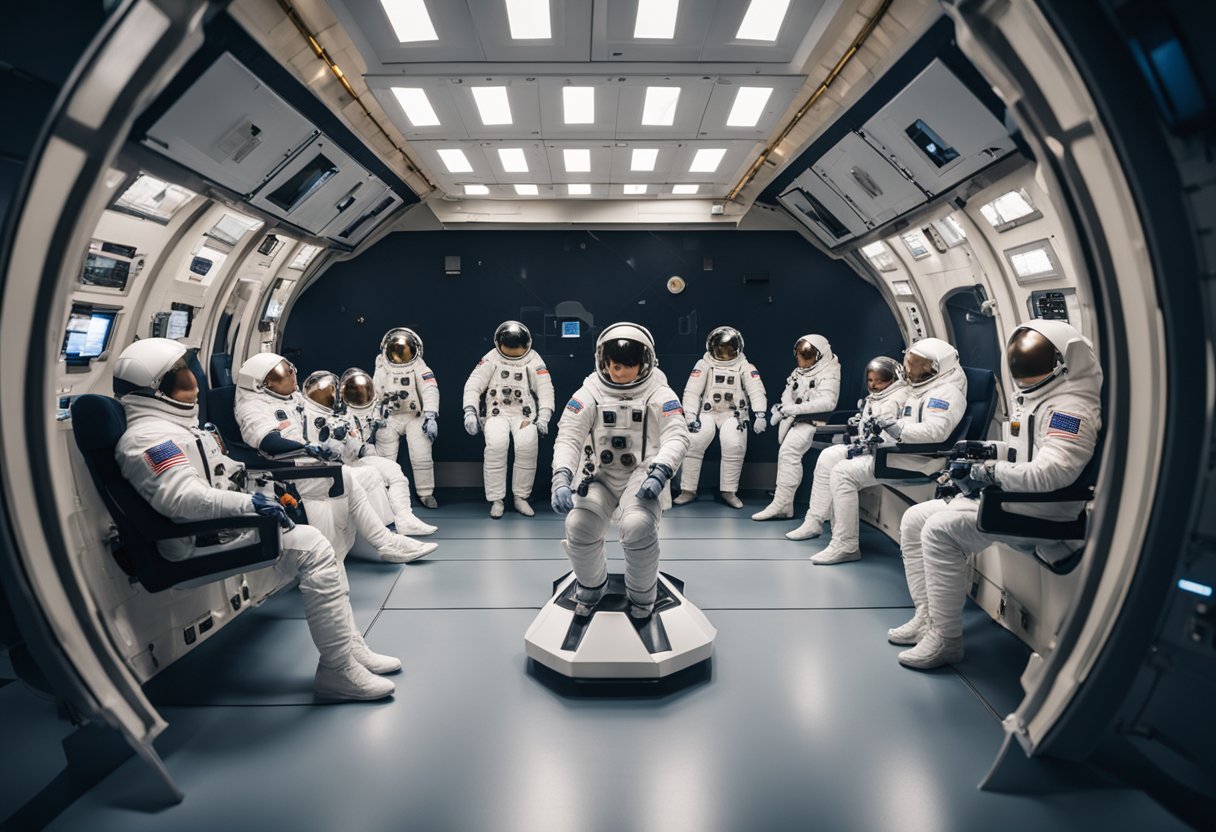
In preparing for the rigours of space travel, we rely heavily on advanced technological training and simulation to ensure our astronauts are well-equipped to handle the challenges of their missions. Our training regime incorporates a variety of high-tech systems that mimic the conditions of space, allowing astronauts to train in realistic environments right here on Earth.
We utilise Virtual Reality (VR) and a variety of simulation technologies to provide astronauts with an immersive experience that closely resembles actual space missions. This training encompasses both routine procedures and emergency scenarios to ensure comprehensive preparedness.
Hardware-in-the-Loop Simulations: Employed to simulate spacecraft systems and create a cohesive training environment. Astronauts learn to interact with actual flight hardware in simulated conditions.
Virtual Reality Laboratory: Enhances EVA (extravehicular activity) preparedness by recreating the sensation of working in the weightlessness of space. The Virtual Reality Laboratory is instrumental for practising tasks that will be carried out in the vacuum of space.
Neutral Buoyancy Laboratory: An expansive pool that simulates microgravity, allowing for the practice of spacewalks. Our astronauts experience neutral buoyancy to simulate the human body‘s response to the absence of gravity.
Radiation Simulation: Since radiation exposure is a significant concern in space, we simulate these conditions to study its effect on the human body and test protective measures.
Pilots and mission specialists alike must be familiar with the principles of piloting and operating jet aircraft. Our training programme entails:
Jet Aircraft Training: Astronauts, particularly those with non-piloting backgrounds, familiarise themselves with flight principles and experience the physical sensations of flying high-performance aircraft.
Flight Simulation: Through advanced flight simulators, we replicate the handling qualities of different spacecraft. This includes mimicking the various stages of a mission, from launch to docking manoeuvres.
Altitude Training: Understanding how altitude affects the body is critical. We expose astronauts to different heights to monitor and adapt their physiology to the challenges of pressure variations.
Continual advances in technology and training methods make the role of simulators and tactile training more integral to preparing for spaceflight. They provide us with essential tools to equip astronauts for the perils of space, hone their responses to potential emergencies, and familiarise them with their spacecraft long before they leave Earth’s atmosphere.
In this section, we delve into the precise requirements and facets of astronaut training and selection. We aim to provide clarity on some common queries.
Candidates must possess a master’s degree in a STEM field, relevant professional experience, or substantial pilot-in-command time in jet aircraft. Citizenship criteria also apply, such as United States citizenship for NASA applicants.
Aspiring astronauts should focus on acquiring advanced STEM education, gaining experience in high-pressure and teamwork-driven environments, and maintaining excellent physical fitness.
The astronaut selection process is highly competitive, with NASA selecting only a small number of candidates from thousands of applicants.
Certainly, five core qualifications include a master’s degree in a STEM field, professional experience or pilot time, U.S. citizenship for NASA, passing a demanding physical examination, and demonstrating skills in leadership, teamwork, and communication.
Astronaut training encompasses a wide range of activities, such as spacewalk practice, Russian language proficiency, robotics training, and aircraft flight-readiness.
The training period can span two years, during which candidates transform into fully qualified astronauts ready for space missions.